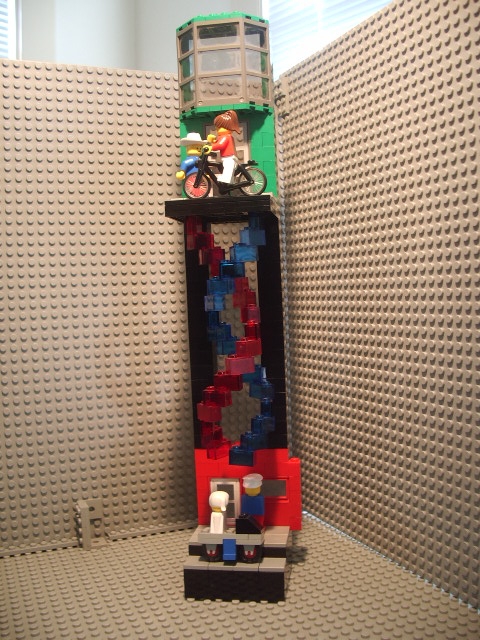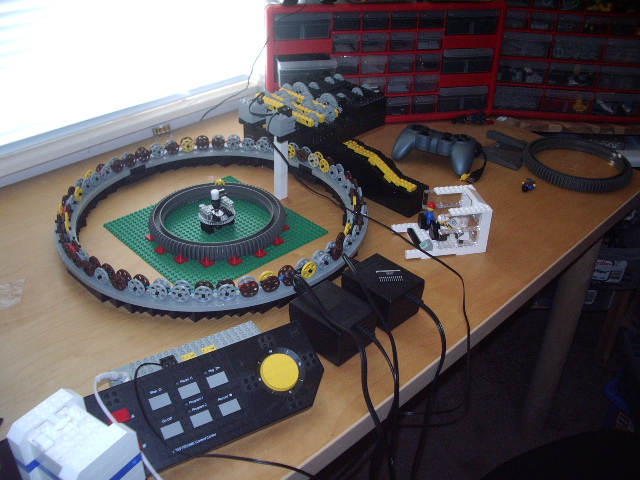
An "almost Joe Vig" time travel vignette.
If you are not familiar with Lego vignettes and Joe Vig, read this and this.
I call this an "almost Joe Vig" vignette because I built it with the intent of entering it in a Joe Vig contest but I never got around to buying the proper pieces to build a "correct" Joe Vig minifig (on top of not having the right part for the head, I built the minifig from memory and got the red and blue parts swapped...). So after months of procrastination, I've decided to publish it as is. Click on the picture to view the matching photo gallery.
The concept is that in the present day aJV (almost Joe Vig) is walking down the street when he gets distracted by a girl on a bicycle and is about to fall into a hole. The hole happens to be the mouth of a worm hole through the fabric of Lego time: the other end opens in the early 1970s.
I used as much distinctive parts from each era to show the evolution of Lego system over the last 30 years. The modern scene uses a large window and door, a bicycle, a jumper plate, some 1x8 tiles in black, green bricks and of course minifigs. To build the scene from the 1970s, I looked for each part in the idea book number 222.
To link the two scenes, I needed a worm hole: of course we don't even know if such thing exists let alone what it might look like (in fact, if they do exist, they probably are invisible to the naked eye!). Next stop was worm hole representation in movies: they are usualy shown as spiralling things, so I built a double spiral out of blue and red clear 1x2 bricks.
The result captures the concept and is surpringly strong: I've moved this vig many times, It's even been bumped into several times over a period of six months and it stayed together !

